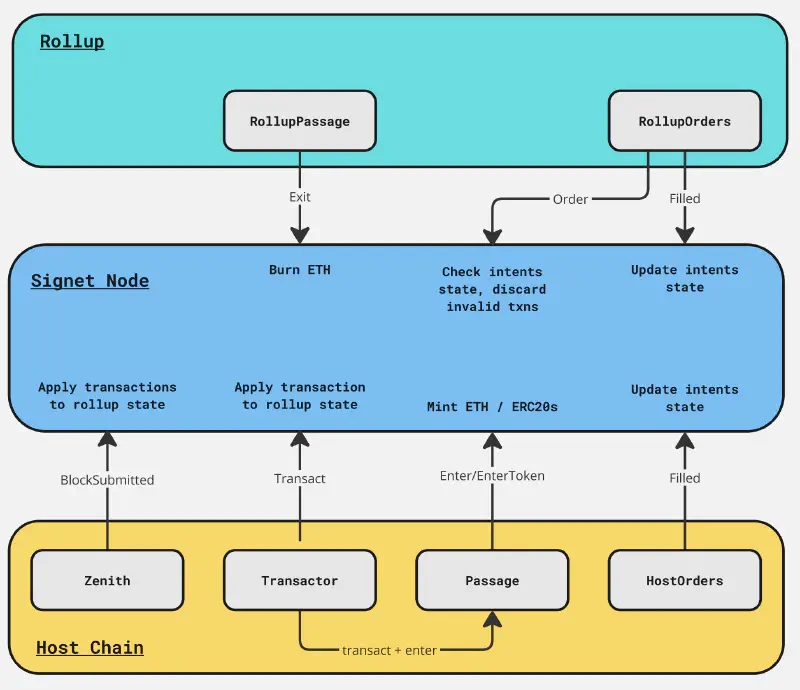Smart Contracts Overview
Signet’s smart contracts implement the on-chain components of the Rollup. They are tightly integrated with the Signet Node, performing verification on the Host, emitting events for the Node to observe and respond to.

Key Smart Contracts
Signet’s architecture includes several key smart contracts that work together to enable the rollup functionality:
Zenith
The Zenith contract accepts bundles of end-user Rollup transactions, which are signed by a Sequencer and submitted by a block Builder to the Host chain.
Transactor
The Transactor contract allows end users to force-submit transactions from the Host to the Rollup, bypassing any possibility of Builder-censored transactions.
Passage
The Passage contract allows the passage of ETH and ERC-20 tokens from the Host to the Rollup.
Orders
The Orders system enables intents-based swapping, supplying tokens on the Rollup and receiving tokens on the Host or on the Rollup.
Design Principles
Signet’s smart contracts follow these key design principles:
- Modularity: Each contract has a specific, well-defined role
- Simplicity: Contracts focus on essential functionality
- Self-containment: Minimal dependencies between contracts
- Verification-focused: Perform verification on the Host chain
- Event-driven: Emit events for the Signet Node to process
Signet uses a system of permissioned roles to manage access to various contract functions. Each contract has specific roles that can perform certain actions.